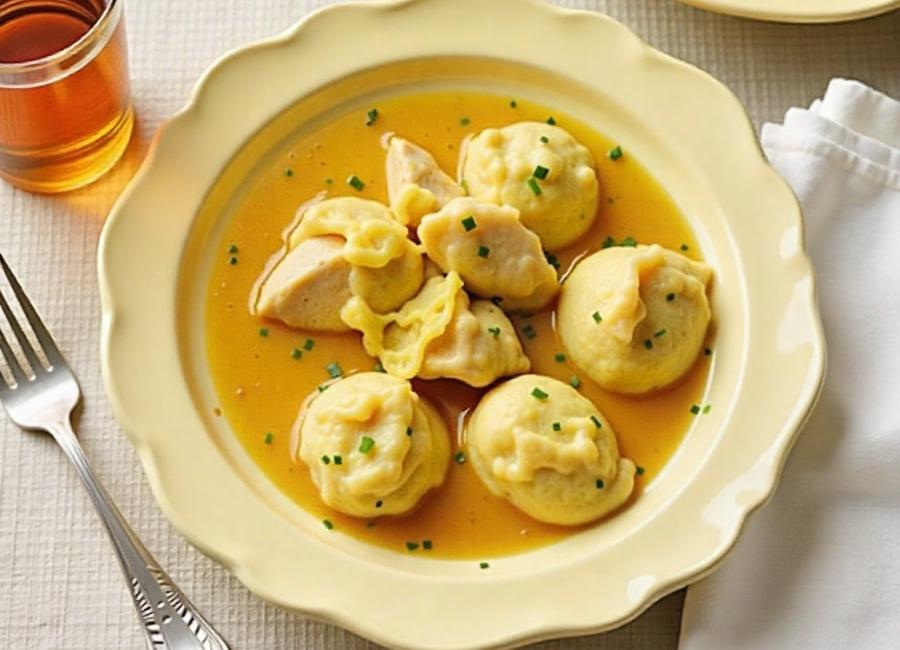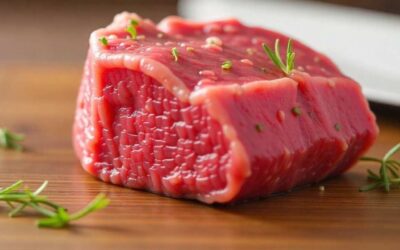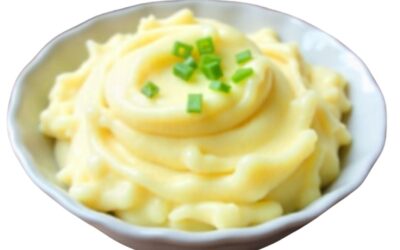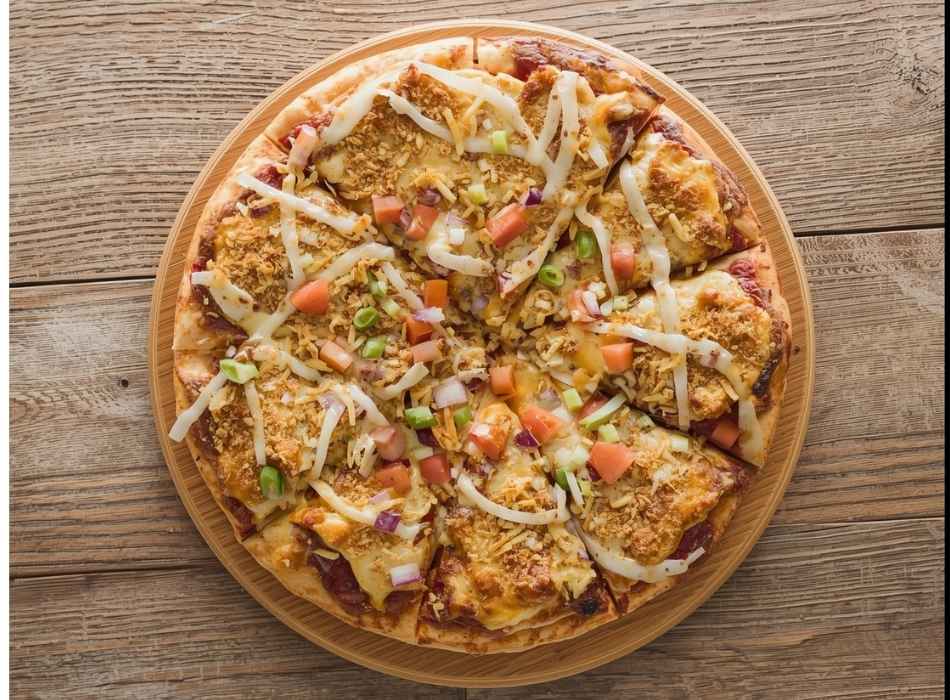Two beloved comfort foods collide in one of the most creative culinary mashups you’ll ever encounter: the Godfather taco pizza. This isn’t your average Friday night dinner—it’s a bold combination that transforms traditional pizza into something entirely new, blending Italian technique with Mexican flavors and a surprising twist that earned it the “Godfather” nickname.
Born from the American Midwest’s love of experimentation, this dish represents everything great about fusion cuisine. Pizza lovers get their beloved crust and cheese, taco enthusiasts enjoy familiar seasonings and toppings, while adventurous eaters discover flavors they never knew they needed. The result? A meal that satisfies multiple cravings at once and creates an experience that’s somehow both familiar and completely unexpected.
Whether you’re planning your next game day spread, searching for a crowd-pleasing dinner option, or simply curious about this intriguing combination, understanding what makes Godfather taco pizza special will change how you think about creative cooking.
What Makes It “Godfather” Taco Pizza?
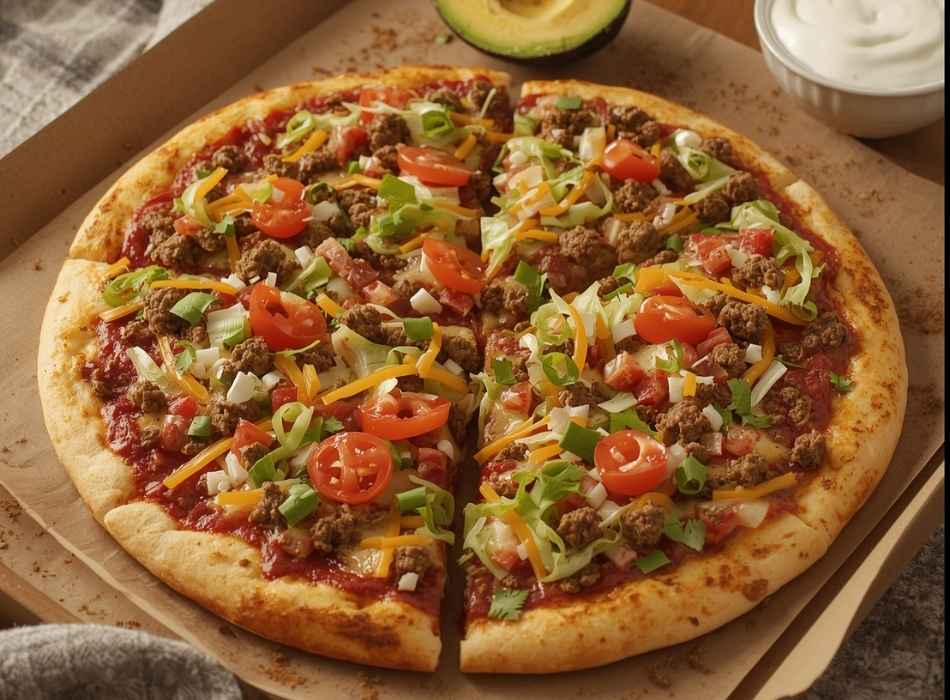
The “Godfather” designation isn’t just marketing fluff—it refers to the pizza’s commanding presence and the specific combination of ingredients that sets it apart from regular taco pizza. Traditional taco pizza typically features a simple arrangement of seasoned ground beef, lettuce, tomatoes, and cheese on a pizza crust. The Godfather version elevates this concept with premium ingredients and a more complex flavor profile.
Key elements that distinguish Godfather Taco Pizza include a robust meat blend often featuring both seasoned ground beef and Italian sausage, creating a fusion that honors both culinary traditions. The sauce typically combines pizza sauce with taco seasoning or salsa, while the cheese blend goes beyond basic mozzarella to include sharp cheddar and sometimes pepper jack for extra kick.
The toppings tell the real story: crisp lettuce, diced tomatoes, black olives, jalapeños, and often sour cream or ranch dressing drizzled on top after baking. Some variations include corn, black beans, or bell peppers, depending on regional preferences and individual creativity.
The Origins and Regional Popularity
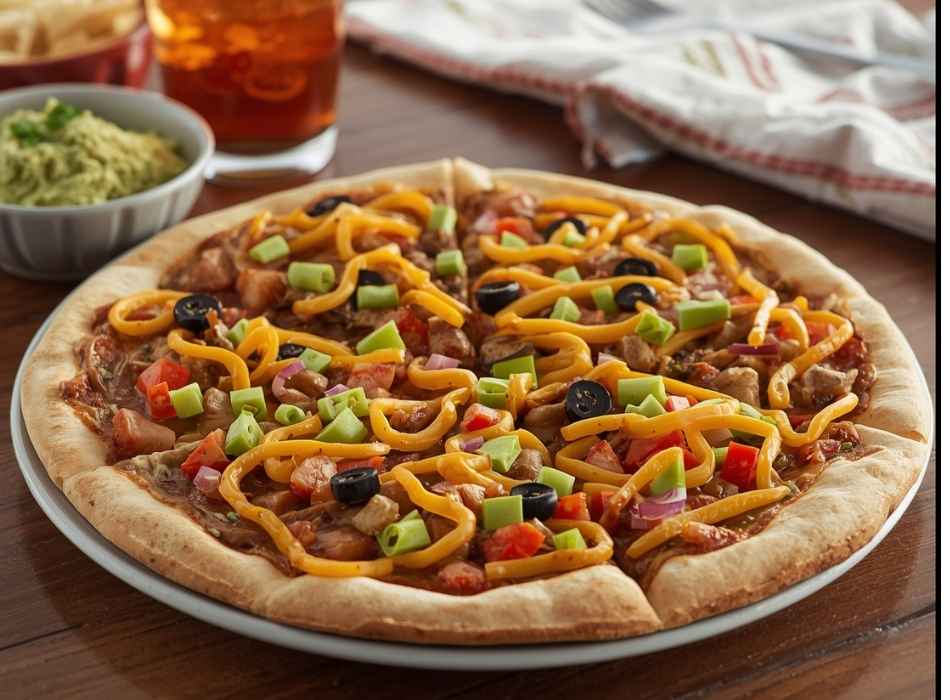
Taco pizza emerged in the Midwest during the 1970s, with Iowa’s Happy Joe’s restaurant chain often credited as the originator. The concept spread throughout the region, becoming particularly popular in Iowa, Illinois, and surrounding states where comfort food innovation thrives.
The Godfather variation likely developed as pizzerias began experimenting with premium versions of this beloved regional specialty. Small-town pizza shops and family-owned restaurants started adding their signature touches, creating heartier, more indulgent versions that could anchor a meal rather than serve as a novelty side dish.
This regional comfort food gained national attention through social media, food blogs, and travel shows, highlighting unique American dishes. What started as a local curiosity has evolved into a legitimate cuisine category, inspiring home cooks and professional chefs alike to experiment with their versions.
Building the Perfect Godfather Taco Pizza

Creating exceptional Godfather taco pizza requires attention to each component, starting with the foundation. The crust should be sturdy enough to support generous toppings without becoming soggy, yet tender enough to complement rather than compete with the flavors above.
The Meat Component
The protein blend defines this pizza’s character. Brown ground beef with taco seasoning first, ensuring it’s well-drained to prevent a greasy finished product. Italian sausage adds depth and complexity—choose a mild variety to avoid overwhelming the taco flavors, or go spicy if heat is your preference. Cook these separately, then combine them for the best flavor development.
Sauce Strategy
The sauce requires a balance between pizza and Mexican influences. Start with a quality pizza sauce as your base, then incorporate taco seasoning, a splash of salsa, or even a touch of cumin and chili powder. The goal is enhancement, not replacement—you want recognizable pizza sauce that happens to have exciting new dimensions.
Cheese Selection
Cheese choice can make or break your Godfather taco pizza. Mozzarella provides the classic pizza stretch and mild flavor, while sharp cheddar adds the tang expected in Mexican cuisine. Consider pepper jack for heat lovers, or Monterey Jack for a creamier texture. The ratio should favor mozzarella for proper melting, with other cheeses adding character.
Topping Technique
Fresh toppings go on after baking to maintain their texture and prevent wilting. Black olives and jalapeños can withstand the heat, but lettuce, tomatoes, and sour cream should be added fresh from the oven. This creates textural contrast that’s essential to the eating experience.
Variations and Creative Twists
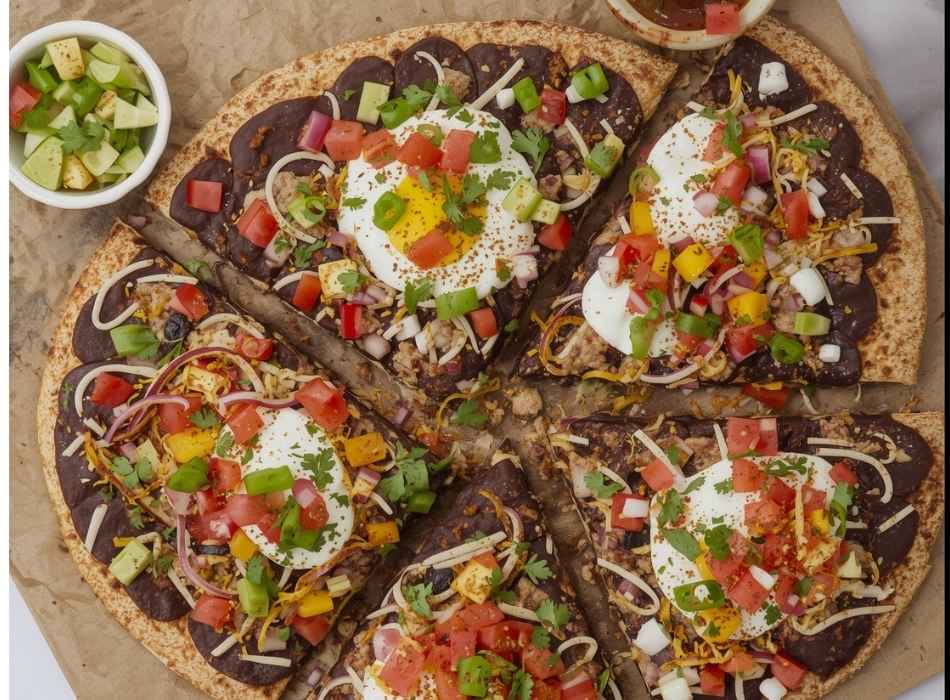
The beauty of Godfather’s taco pizza lies in its adaptability. Vegetarian versions substitute seasoned black beans or plant-based ground meat alternatives, while maintaining the essential flavor profile through proper seasoning and fresh toppings.
Breakfast variations incorporate scrambled eggs, breakfast sausage, and hash browns, topped with traditional taco pizza elements for a brunch-worthy creation. Seafood lovers experiment with seasoned shrimp or fish, while chicken versions offer a lighter protein option.
Regional variations reflect local preferences: Texas versions might include barbacoa or chorizo, California interpretations add avocado and cilantro, while Southwestern takes incorporate green chiles and corn.
Serving and Pairing Suggestions
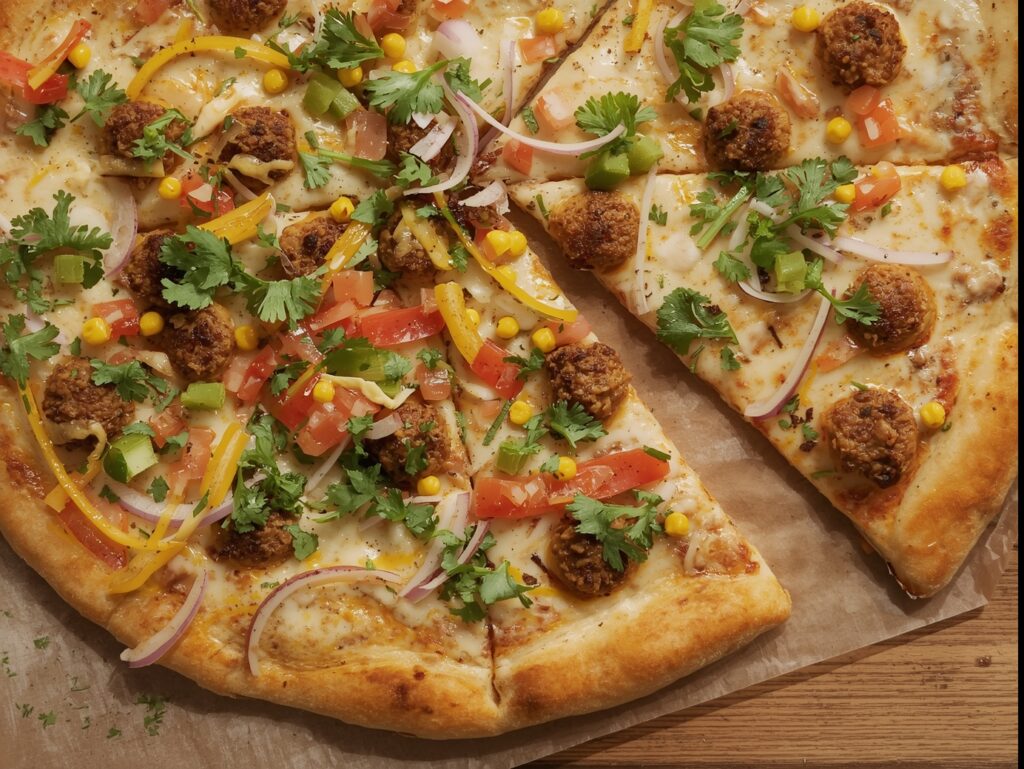
Godfather taco pizza works well as a complete meal, but thoughtful sides can enhance the experience. Simple options like tortilla chips with salsa or guacamole reinforce the Mexican theme, while a crisp green salad provides a refreshing contrast to the rich, hearty pizza.
For beverages, consider Mexican beer, margaritas, or even Italian sodas to bridge both culinary influences—the pizza’s richness pairs well with acidic drinks that cleanse the palate between bites.
Serve immediately while the cheese is still melted and the fresh toppings provide maximum textural contrast. Cut into squares rather than traditional wedges for easier handling and more authentic taco pizza presentation.
Bringing Two Worlds Together
Godfather taco pizza represents more than just a creative menu item—it’s proof that culinary boundaries exist to be crossed thoughtfully and deliciously. This fusion respects both Italian pizza-making traditions and Mexican flavor profiles while creating something entirely new.
The next time you’re torn between pizza night and taco Tuesday, remember that the best solutions sometimes come from refusing to choose. Try making your own Godfather taco pizza, or seek out a local restaurant that’s mastered this art form. You might just discover your new favorite comfort food combination.












